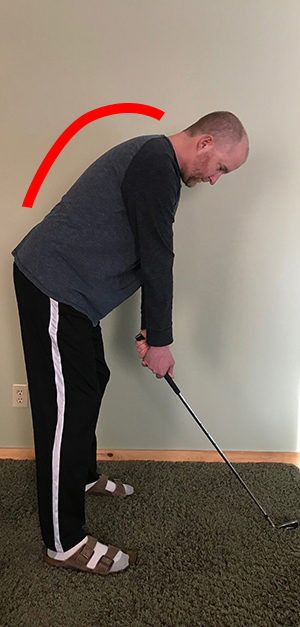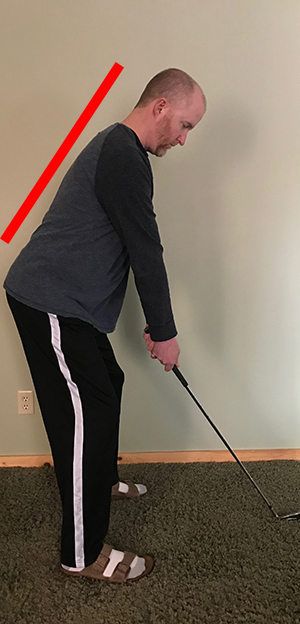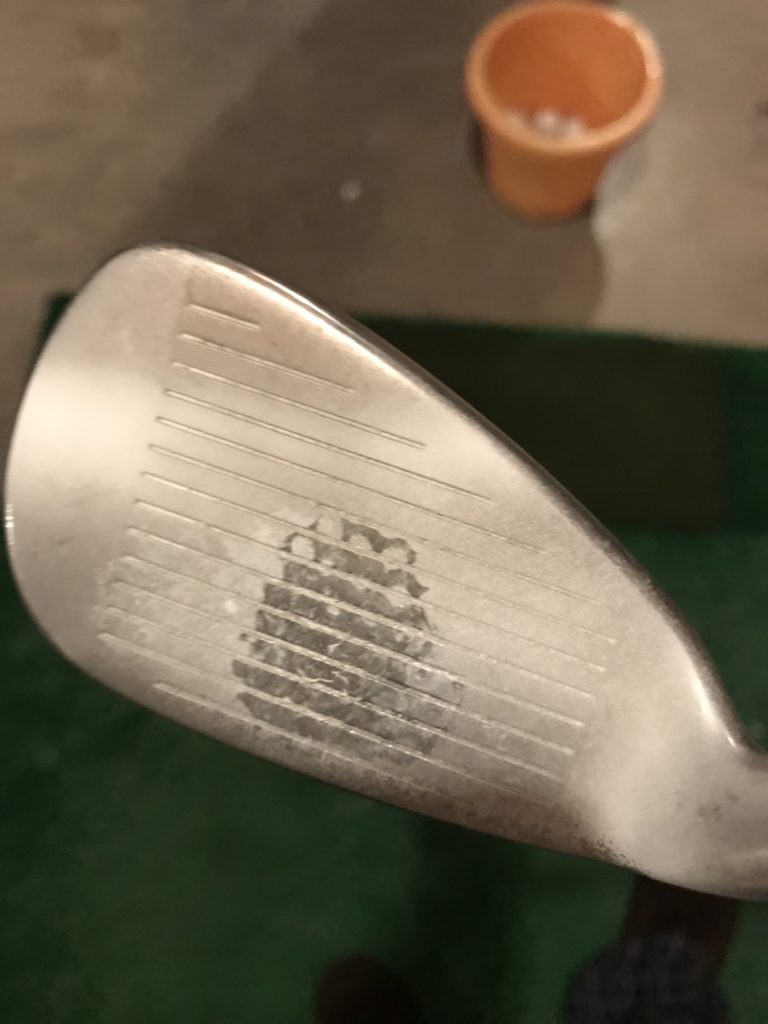May 8th 2018 Golf Round Review
I’m happy to tell everyone that I’m back golfing in a weekly league. A long time ago, I wrote about the reasons to join a golf league, and they all still hold true today.
The league is the Tuesday Night Men’s Late League at Pinewood Country Club in Harsaw, WI. The course plays 6,179 yards from the back tees which we play in league. While the course is unique in that it has no bunkers, the rolling, wooded terrain provides a challenge for amateur golfers of every level. I golfed in this league for a few years about 10 years ago and thoroughly enjoyed the course, members, and owners.
I will be reviewing every round here on the website, and I my hope is that you can learn some things along with me throughout the season. The league is a nine hole league and we alternate between the front and back nine each week. My goal is to break 40 on each nine before the end of the season.
We had a late spring this year so courses have just open within the last week. We had our first night of league this past Tuesday.
My final score of 49 wasn’t the score I shoot for, but there were enough positives in the round, especially considering it was the first time on a course this year.
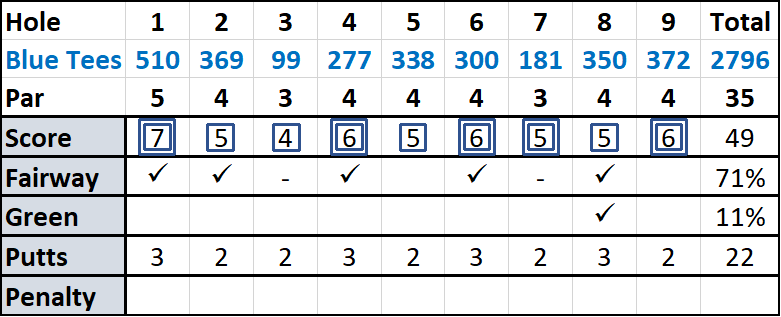
As a high handicap or beginner golfer, it is extremely important to focus on the positives from your round and not dwell on negatives. Absolutely take stats during your round to formulate a practice plan to improve in needed areas of your game, but don’t relive your bad shots over and over in your head.
I had a lot of positives in this round, including hitting 71% of fairways in regulation, incurring no penalty strokes, and scoring no worse than a double bogey on any hole. Avoiding triple bogeys and worse is so important to keeping your round in check and not allowing it to get out of hand score wise.
Of course I have many areas of improvement. 22 putts for nine holes is not good. Add in that I only hit one green in regulation, the 22 putts shows how poor my short game and putting really was.
The first few rounds I will be reviewing every hole so you can get an overview of the course. While I’m not sure if I’ll review each individual hole every week, I’ll be reviewing at least some every week.

On the 1st hole, I striped my driver 260 yards right down the middle of the fairway. I truly could not have been happier. With 250 yards left, I decided to take 3 wood. I hit a pretty good shot up the left side, leaving me about 25 yards to go to the green. My short game issues surfaced immediately in the round, as I preceded to blade my wedge across the green. My chip coming back wasn’t much better, barely staying on the green. I then 3 putted for a double bogey 7. If I’m going to focus on positives, which I am, I’d take my first two shots any day of the week on this hole.
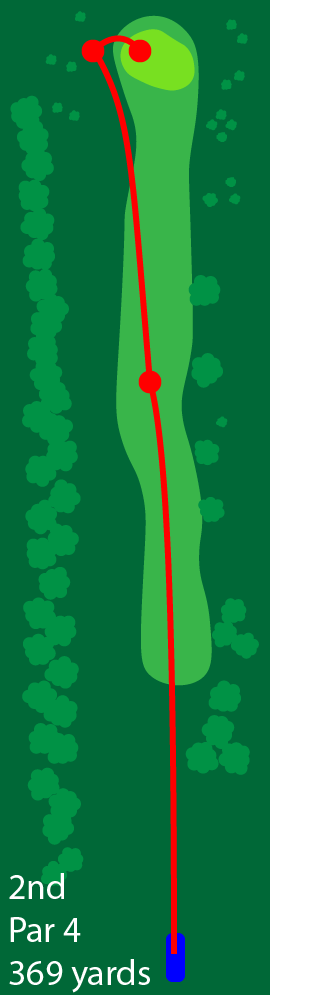
The 2nd hole is uphill from about 175 yards out to the green. I hit another nice drive down the middle. I had just inside of 150 yards left. The green was nearly 40 feet above me so I choose my 6 iron. I judged the distance well but pulled the shot left of the green. I made an excellent chip to inside 3 feet. I missed the short putt and had to settle for a bogey 5.
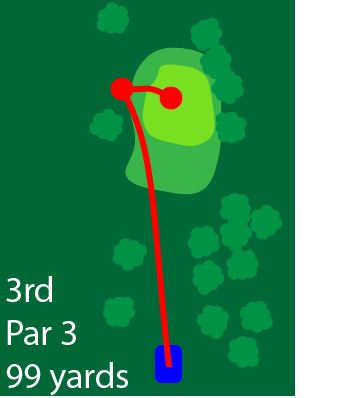
While the 3rd hole measures only 99 yards, it has a 47 foot drop in elevation from tee to green. Hit the perfect distance three-quarter swing gap wedge but again pulled it left of the green. I chipped on to about 4.5 feet, missed the par putt and recorded a bogey 4.
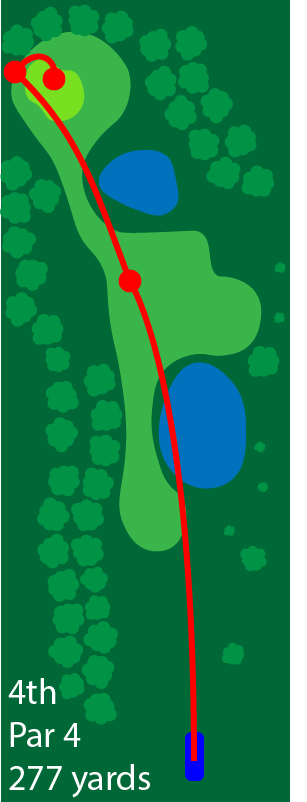
Long hitters could try to drive the green on the short par 4 4th hole, but it’s a small target, and the smarter play is to layup. I choose a 4 iron off the tee and hit a great layup, leaving about 95 yards to the green. I pulled another gap wedge left off the green and a little long. This was the 3rd short iron I pulled left. My following chip was well short, not getting over the mound between me and the hole. I barely got my putt over the mound and still had several feet to the hole. I took another 2 putts to get in. It ended up being my 2nd 3 putt of the night and another double bogey.
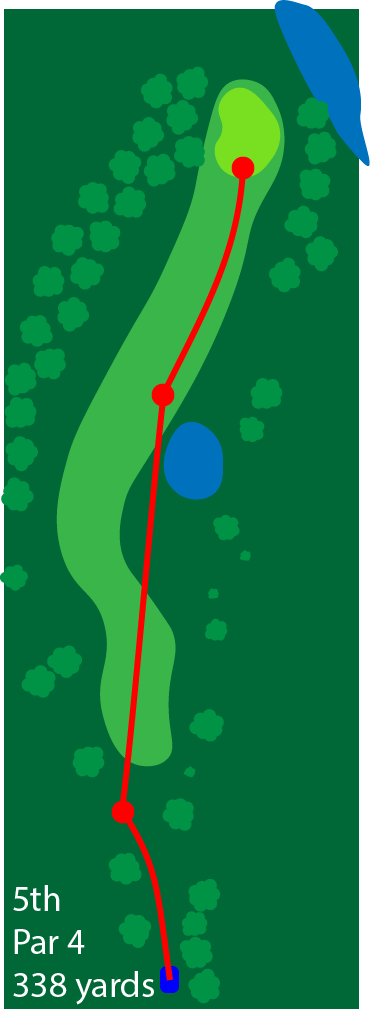
Looking back I probably got too frustrated over the poor chipping and putting on the last green, because a proceeded to top my driver off the 5th tee. I had 250 yards left to the green. I’m not capable of reaching the green from 250 yards in the rough, so I laid up to the yardage I wanted for my 3rd shot. I hit a 7 iron for my second shot which left me my preferred remaining yardage of 100 yards. I hit my gap wedge just a little fat so while I made the green, I had a good 50-60 feet to the hole. I hit a pretty good lag putt to 5 feet, sank that putt and recorded a bogey 5.
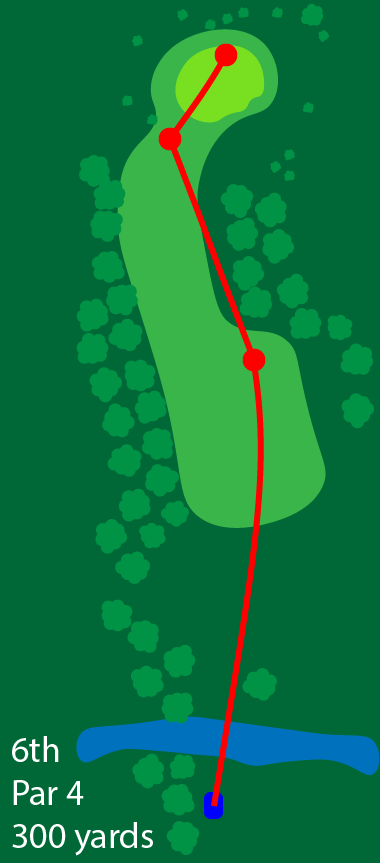
The 6th hole is an uphill par 4. Hitting driver off the tee requires you hitting into a small landing area. The safer play is to hit your tee shot about 200 yards and leave 100 yards to the green. I had hit my 4 iron cleanly but pushed it a bit too far right, not leaving me an angle to the green. I hit my second shot about 15 yards in front of the green and didn’t hit a great chip for my 3rd shot to the back of the green. I 3 putted for the 3rd time that night and recorded a double bogey 6.
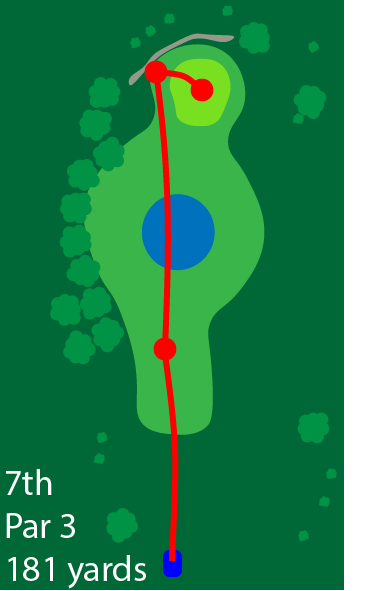
A pretty nice wind had kicked up and was at our back on the 7th tee. I decided to go with a 6 iron. I had another lack of focus and topped the 6 iron. Hit a wedge for my second shot and again pulled it left. I couldn’t get up and down and had to record a double bogey 5. I just hate to take a double on a par 3.
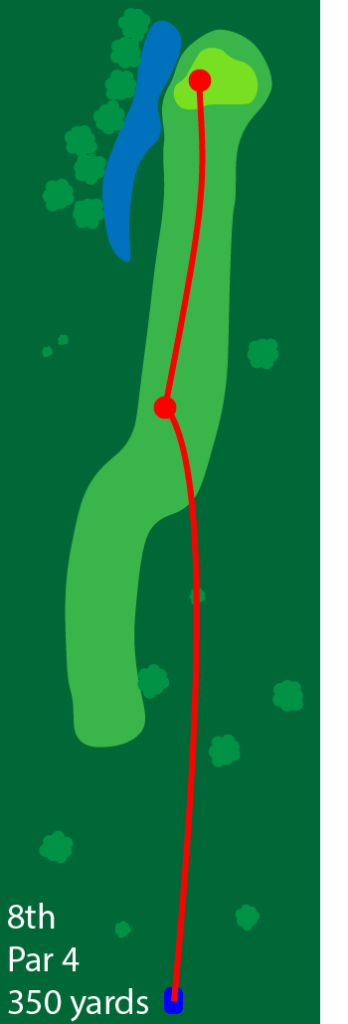
I hit another good driver on the 8th hole, leaving me with 125 yards for my second shot. I pulled a 9 iron but thankfully not as bad as my other pulls, and hit my only green in regulation of the night. My 4th 3 putt of the night led to a bogey 5.
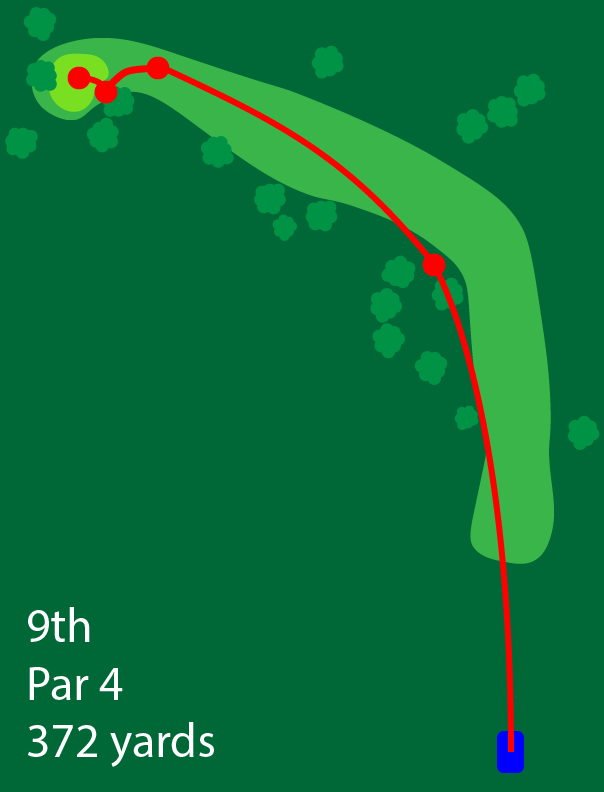
The 9th hole is a dog leg left par 4. I attempted to cut the corner with my driver, which is possible, but I caught the last tree. I was in the rough and did not have a line to the green. I hit a 7 iron to about 20 yards in front of the green. My next chip might have been the worst of the night. It came up short of the green and it took me a 4th short to get on. Missed the 5 foot putt bogey putt and recorded another double bogey.
Final Thoughts
Except for two times losing focus, I hit the ball extremely well off the tee, whether it was my driver or 4 iron. The two times I lost focus and topped my shots is a good reminder to clear my head before each shot and after every hole.
I did do a lot of work on my putting this weekend so I’m hoping to see improvement in that area tomorrow in my next league round. I worked on lag putting and short putts. Eliminating 3 putts is a two part process. You need to improve your lag putting, which is getting the ball close to the hole on your first long putt, and improve making the short 3, 4 and 5 foot putts.
I also worked on determining why and correcting pulling my short irons to the left. These are straight pulls, so both my club path and club face are left of target. I worked on getting my path more to the right, which seems to help. If I am still pulling my short irons tomorrow in league, a quick fix will be to aim more to the right. I need to hit more than one green in regulation.
I’m excited to see improvement in my game as we go through league season.

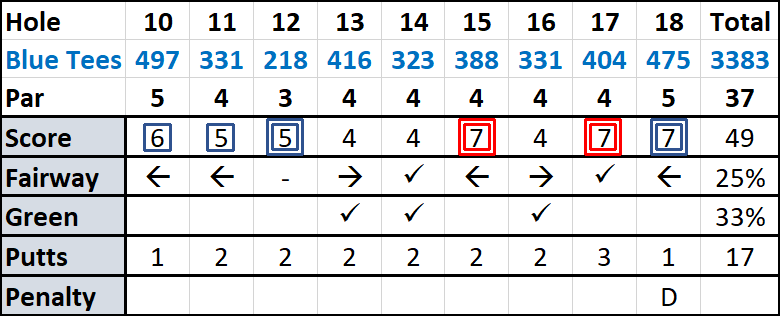

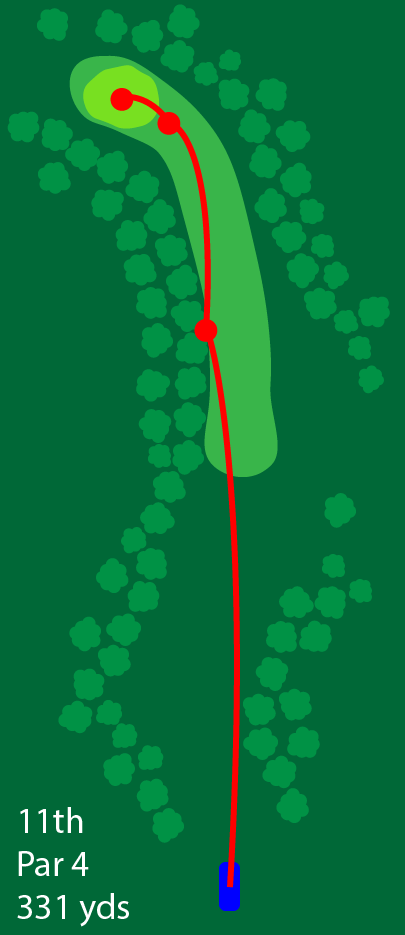
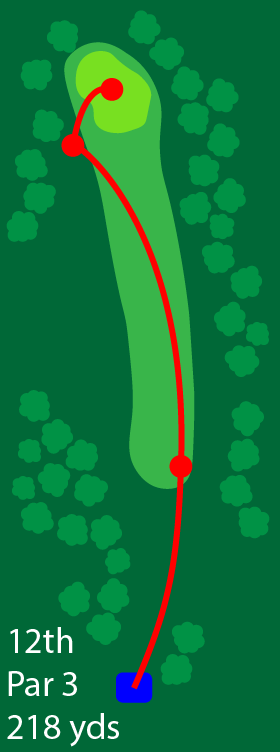

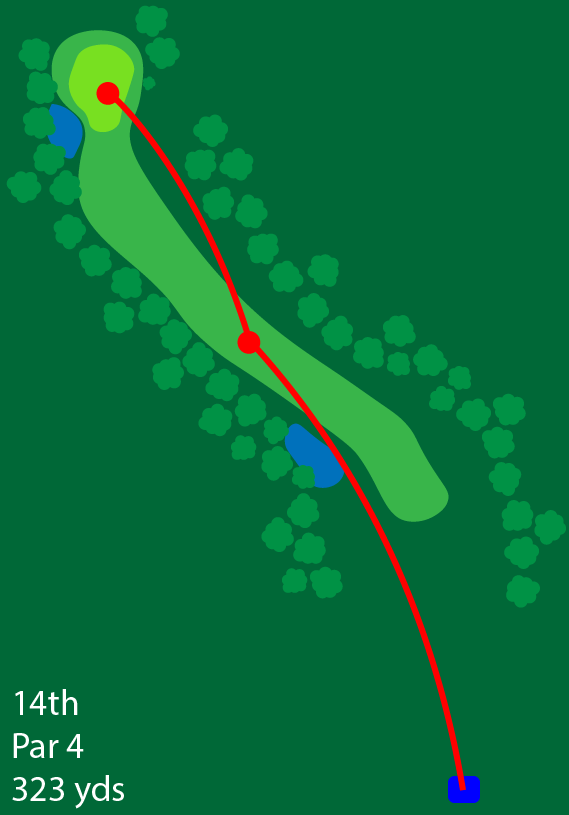



 This would have been the perfect opportunity to improve on leaving a bad hole in the past and committing to focus on the present hole. If you’ll remember this was an issue for my last week. I still have a lot of work to do in this area as I severely pulled my driver into the woods. We have a local rule in our league that gives us distance of our shot instead of being forced to re-hit off the tee. You can re-hit but you can take a drop at the point where the ball crossed the tree line. This is a good rule which helps maintain speed of play. I went from one side of the hole to the other when I hit my now third shot far too close to the woods on the right. I advanced my fourth shot to about 150 yards out and hit a very good 7 iron just off the back of the green to be lying five. We have some hole games each week and the 18th was closest chip. I chipped my 7 iron to within two inches to win a $49 gift card to the pro shop. It was a great consolation for taking a double bogey on the last hole and going triple-par-triple-double to close out my round.
This would have been the perfect opportunity to improve on leaving a bad hole in the past and committing to focus on the present hole. If you’ll remember this was an issue for my last week. I still have a lot of work to do in this area as I severely pulled my driver into the woods. We have a local rule in our league that gives us distance of our shot instead of being forced to re-hit off the tee. You can re-hit but you can take a drop at the point where the ball crossed the tree line. This is a good rule which helps maintain speed of play. I went from one side of the hole to the other when I hit my now third shot far too close to the woods on the right. I advanced my fourth shot to about 150 yards out and hit a very good 7 iron just off the back of the green to be lying five. We have some hole games each week and the 18th was closest chip. I chipped my 7 iron to within two inches to win a $49 gift card to the pro shop. It was a great consolation for taking a double bogey on the last hole and going triple-par-triple-double to close out my round.









